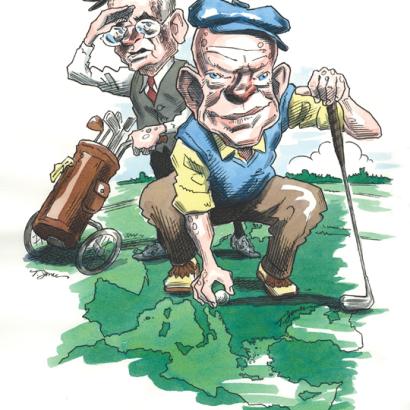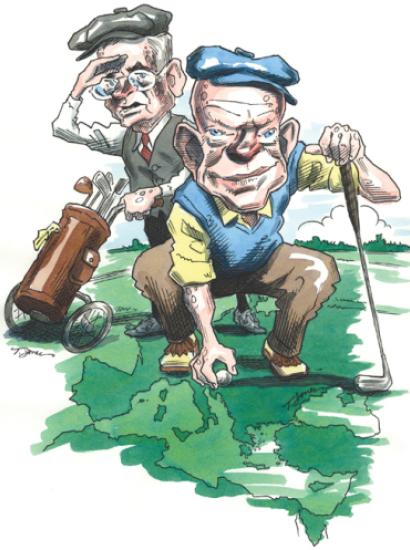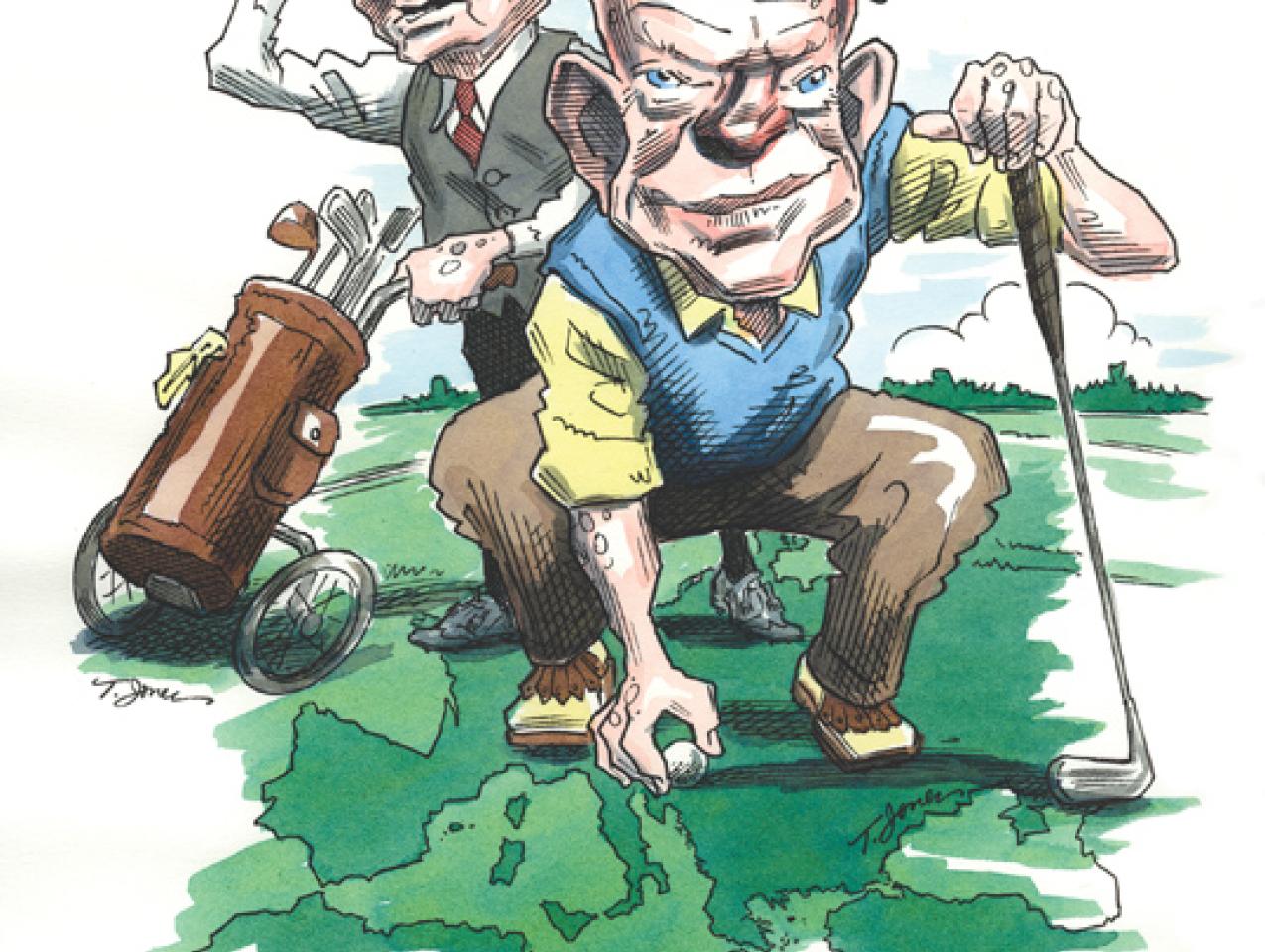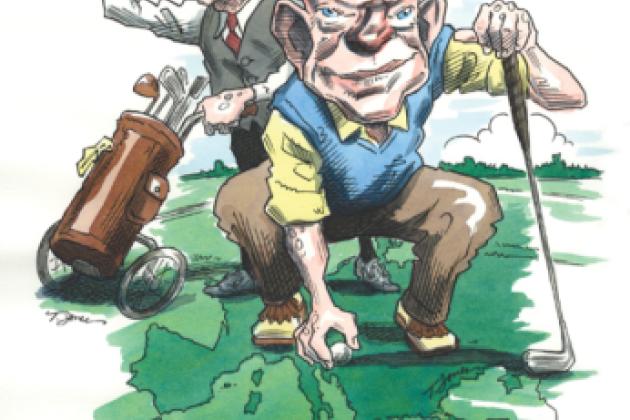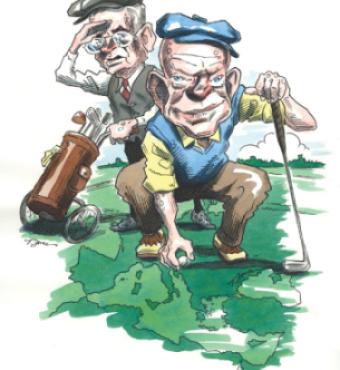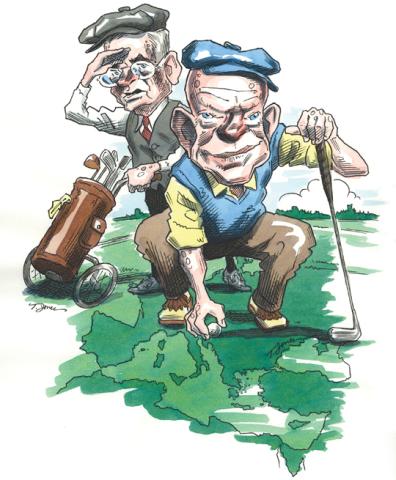- World
- US
- Contemporary
- Military
- International Affairs
- US Foreign Policy
- Security & Defense
- US Defense
- Campaigns & Elections
- The Presidency
- History
- Politics, Institutions, and Public Opinion
Study history, study history. In history lies all the secrets of statecraft.—Winston ChurchillThat men do not learn very much from the lessons of history is the most important of all the lessons that history has to teach.—Aldous Huxley
One spring afternoon in 1953, only a few months after his inauguration, President Dwight D. Eisenhower sat with his secretary of state in the White House Solarium Room, watching as the world turned toward communism. After a victorious campaign in which Eisenhower had stressed his pledge to form and pursue a coherent, effective national strategy for the new “Cold War,” the president and John Foster Dulles were considering their options. World War II had pulled America through the looking glass: a wartime ally, the Soviet Union, was now an adversary. Britain had yielded its role as the dominant Western power to the United States. The postwar globe was an unstable landscape of democratic and totalitarian states; American troops at that moment were part of one such ideological and military clash in Korea. Moreover, Soviet dictator Josef Stalin had died only a few days before, and Eisenhower was pondering the implications of that death as well as the rising tide of Soviet power in Eastern Europe.
The president was troubled by the crisis-oriented U.S. defense program he had inherited. Along with it came a record defense budget—it had quadrupled since the end of World War II. On the campaign trail, Eisenhower had promised a cost-efficient defense strategy that combined planning and coordination with the leadership he had exercised in World War II as supreme commander of Allied forces. As he took stock in the early days of his presidency, he concluded that budgeting to meet the moment of “maximum danger”—when the USSR was projected to have sufficient atomic capability to launch a surprise attack on the United States in 1954— would bankrupt the United States.
No part of Harry Truman’s security program troubled Eisenhower more than its cost. He felt that his predecessor had relied on increased military spending to compensate for failings in overall strategy—and that America was becoming bogged down in an economic swamp. But how should Eisenhower face the rising threat? And how could he put the United States on a secure strategic footing for the future and nurture economic growth?
Spending was part of the strategic equation, as it is today. After World War II, war-weary Americans were eager to return to peacetime pursuits. Truman was aware of the potential national security threat posed by the Soviet Union; however, he assumed that the United States’ dominant military and economic power would deter Soviet adventurism and budgeted accordingly—that is, until the Soviets exploded their first nuclear weapon, China went Red, and communists invaded South Korea. In response, Truman boosted the defense budget and more than doubled U.S. forces.
Eisenhower’s dilemma foreshadowed the reappraisal of the military’s budget, and of the U.S. strategic mission, that Americans struggle with now. After the Cold War ended and the Soviet Union collapsed, Americans first pursued a “peace dividend” while their elected leaders slashed the budgets and numbers of the military, intelligence services, and diplomatic corps. Then, in a reassessment similar to that of the late 1940s, Americans questioned many of those cuts in light of the indefinite war on terrorism and security commitments in Iraq and Afghanistan.
America’s next president, who will take office almost eight years into the war on terrorism, would benefit from studying Eisenhower’s moment of decision eight years into the Cold War. The United States again needs to forge a balanced, integrated defense posture for an indefinite future. Just as Eisenhower struggled with planning for increasingly uncertain years ahead, with extremely high stakes and little consensus on how to deal with a growing strategic danger, whoever takes office in January 2009 will have to negotiate a world in which alliances and threats have shifted and will probably shift again.
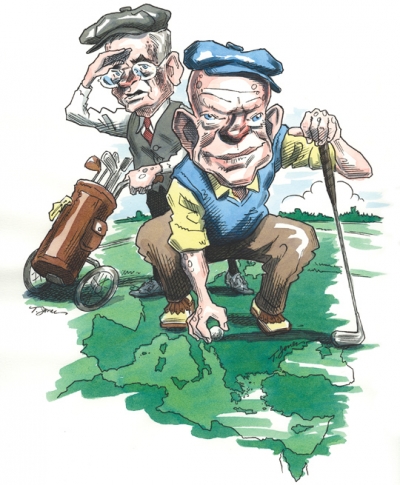
The president who mulled over these difficulties in 1953 had a distinctive leadership style. The general-turned-president believed in gathering highly qualified people with opposing views and listening while they sparred. Eisenhower understood the value of being challenged by his advisers on even his most basic assumptions regarding the nature of the new Cold War. By March, he had already considered several conflicting viewpoints about the unfolding U.S. role. The strategy Truman had developed for an uncertain future called for containing Soviet expansion and using military, economic, and political pressure to eventually defeat communism. Another alternative, advocated by Paul Nitze, emphasized a military strategy against communist domination. Dulles, who during the presidential campaign had urged the United States to regain the foreign policy initiative, to seek a free, democratic, unified Germany, and to “roll back” communist control of Eastern Europe, endorsed the Nitze policy.
But Eisenhower countered his secretary of state by arguing that “it’s the minds and hearts of men that must be won.” And he would begin in Washington.
MAY THE BEST IDEAS WIN
By early 1953, U.N. and communist forces had fought the Korean War to a stalemate in a conflict that would leave 35,000 Americans dead; armistice negotiations were deadlocked. The United States was entangled in an arms race with the Soviet Union and had recently detonated the world’s first hydrogen bomb (the Soviet H-bomb would soon follow). The North Atlantic Treaty Organization looked to create a European defense community but had failed because of French resistance to admitting a re-armed Germany. In Iran, a new government, perhaps with communist help, had nationalized oil concessions belonging to the British, threatening the flow of oil to world markets. In the Soviet Union, uncertainty filled the vacuum left by Stalin’s death. In April, Eisenhower presented his “Chance for Peace” speech aimed at the Soviet leadership, only to be met with silence from the Kremlin. Many Americans encouraged Eisenhower to take a more belligerent stance toward Soviet power, as he had promised on the campaign trail. The president’s recently installed national security staff showed signs of concern as it looked for vision and policy direction from its new leader.
Eisenhower set out to develop an overarching U.S. strategy. His solution, however, would spring not from the president’s ideas alone, as the American public might have expected, but from a process true to his deliberative nature. The key step was an exercise code-named Project Solarium— a collection of three multifaceted task forces drawn from U.S. government specialists, both military and civilian. The project was named for the room in which Eisenhower and Dulles had hatched the idea. The teams were ordered to examine separately and in detail the most promising approaches being considered by the national security establishment and then report their conclusions to the president. They were not to harmonize their findings. Eisenhower wanted to hear them disagree.
The working groups spent six weeks at the National War College deliberating their strategies. On the appointed day—July 16, 1953—they fleshed out three options for the president:
- Task Force A (containment): Led by George Kennan, author of the 1946 “Long Telegram” that diagnosed the developing East-West antagonism, it advocated only slight modifications to the status quo. Its advice was to “maintain over a sustained period armed forces to provide for the security of the United States and to assist in the defense of vital areas of the free world; to continue to assist in building up the economy, military strength, and cohesion of the free world; and, without materially increasing the risk of general war, to continue to exploit the vulnerabilities of the Soviets and their satellites by political, economic, and psychological measures.” Kennan’s group defended the original containment framework that Kennan had designed for Truman. The task for the Eisenhower administration, as this group saw it, was “to rectify imperfections in our strategy; give it new confidence, boldness and constructiveness; recapture flexibility; effect better integration; and improve implementation.” Of particular note: Task Force A cautioned the administration not to allow military programs to drive strategy and stressed both the strategic balance and the aspirations of peoples and nations.
- Task Force B (a “line in the sand”): Led by U.S. Air Force Major General James McCormack, it proposed “to complete the line now drawn in the NATO area and Western Pacific so as to form a continuous line around the Soviet bloc beyond which the United States will not permit Soviet or satellite military forces to advance without general war; to make clear to the Soviet rulers in an appropriate and unmistakable way that the United States has established and is determined to carry out this policy; and to reserve freedom of action, in the event of indigenous communist seizure of power in countries on our side of the line, to take all measures necessary to re-establish a situation compatible with the security interests of the United States and its Allies.” This group accepted containment as a viable policy but proposed that it be pursued more forcefully and unilaterally. The main thrust was a categorical declaration that any Soviet armed aggression would invite general war. Moreover, it insisted that the explicit threat of a nuclear response was the most effective way to hold this line in the sand.
- Task Force C (rollback): Chaired by Admiral R. L. Conolly, it spelled out the Republican campaign promise: “to force the Soviets to shift their efforts to holding what they already have.” Its goals were to “increase efforts to disturb and weaken the Soviet bloc and to accelerate the consolidation and strengthening of the free world” and “create the maximum disruption and popular resistance throughout the Soviet bloc.” Its authors wrote that “the policy is not designed to provoke war . . . but it involves substantial risk of general war.”
In short, Task Force C argued that A and B promoted the status quo and that containment provided no way to reach the goal of reducing Soviet power and influence. C maintained that “the greatest provocation is weakness” and that a “high-stakes” game of chicken “must be played boldly.”
A TAILORED APPROACH TO NATIONAL SECURITY
The task forces presented their summations as the president listened intently. Then Eisenhower stood up, congratulated the participants on their work, and announced his impressions. He quickly ruled out any policy that could not win the support of America’s allies, that cost too much, or that accepted an increased risk of general war. He paid close attention to Task Force A’s advice on German unification and re-armament, to Task Force B’s emphasis on atomic brinkmanship, and to Task Force C’s argument that the international environment made it imperative that the United States move rapidly and aggressively to fracture the growing communist empire. But the basis of his strategy would remain containment.
Ultimately, the Solarium findings called for “a U.S. capability for a strong retaliatory offensive, a base for mobilization, and a continental defense” and “strong, independent, and self-sufficient groupings of nations friendly to the United States centering on Western Europe, on the Far East, and a position of strength in the Middle East.” Eisenhower authorized the Solarium conclusions as the basis for a new national security policy to be considered by the National Security Council. The new Republican president had endorsed a policy akin to that of his Democratic predecessor: it updated and continued Truman’s policy of political, diplomatic, economic, and if necessary military containment of the USSR. It was a more forceful brand of containment, but it was nothing like what Dulles proposed in the 1952 GOP platform of a physical “rollback” of communist forces. It was to be both flexible and sustainable.
What Eisenhower also advanced through Project Solarium was the institutionalization of a strategy that was bipartisan, well thought out, and thoroughly debated. Those with strong points of view could feel they had been heard, and the debate could climb down from the overheated level of campaign rhetoric while fulfilling a campaign promise of a “policy of boldness” toward the Soviets. It conferred a legitimacy on the president’s actions. Kennan later remarked that the president, by taking command of Solarium and its colliding views, showed “his intellectual ascendancy over every man in the room.” Eisenhower thus created the foundation of U.S. Cold War policy from 1953 to 1991.
A FLEXIBLE STRATEGY, A CHANGING WORLD
Solarium gave Eisenhower a way to mitigate risks even when he could not remove them. The implementation of the new strategy was not flawless— like those before and after him, his policies rested on fallible judgments about conditions in the world; the conduct of allies, opponents, and others; and the impact of U.S. actions. The strategy did not lead directly to the demise of the Soviet Union; the Soviet collapse and the peaceful resolution of the Cold War were ultimately due to the bankruptcy of the system and the recognition by Soviet bloc leaders that basic reform was unavoidable. Containment, nevertheless, provided the indispensable context.
When Eisenhower left office in 1961, America’s world position was preeminent and the country had achieved something close to “peace with strength,” notwithstanding perceived threats in Berlin, Cuba, Laos, and Vietnam. Eisenhower handed President John F. Kennedy an elaborate, sophisticated system for national security management and strategy.
No president before or since has received such a systematic and focused briefing on the threats facing the nation’s security and the possible strategies for coping with them. There is no evidence that such high-level strategy meetings occur today, even in light of what has been dubbed the global war on Islamic extremism. (In December 2003, then Deputy Defense Secretary Paul Wolfowitz led a secret “Solarium II” effort to rework U.S. strategy, but the president did not chair the meeting and Solarium II offered no conclusions.)
Would the next president prefer the international situation in January 1953 to that of January 2009? Today’s world is more dynamic, but the danger is no less and the United States wrestles with a similar state of strategic ambiguity. Eisenhower faced not only the Soviet Union but communist China, an intractable leader in Iran, and war in Korea. In January 2009 the new president will inherit the rise of China and India, Russia’s resurgence on the world stage, Europe’s evolution, a nuclear North Korea, a possibly nuclear Iran, globalization’s powerful and unpredictable effects, and national, cultural, and religious reactions to globalization. Strategy must go beyond the customary National Security Strategy rhetoric and embrace what Eisenhower knew to be true: the United States must clearly present concise priorities and well-defined strategy to its people and to the world. Presidential vision and teams of superlative thinkers can make the difference.








